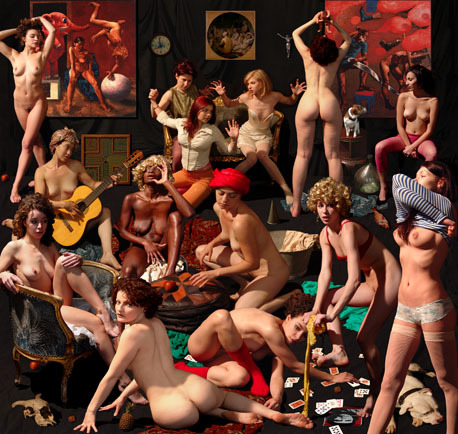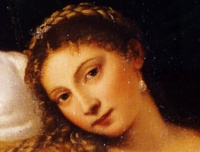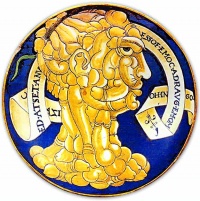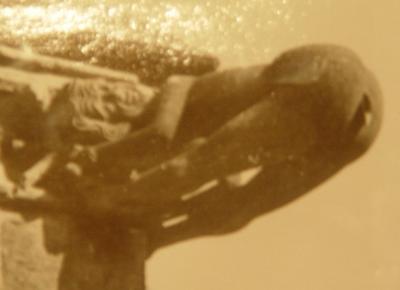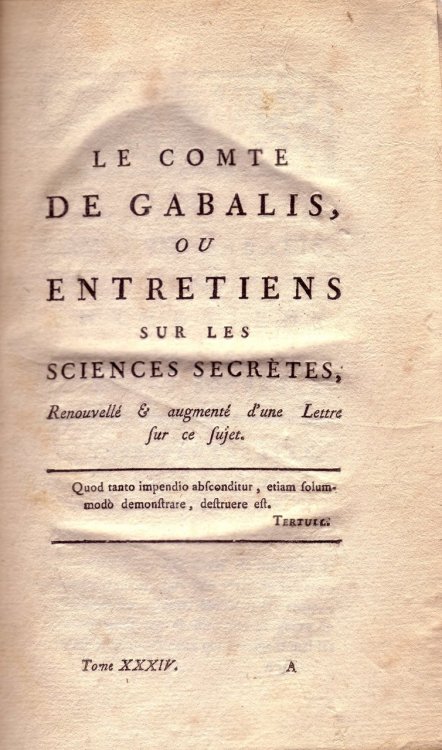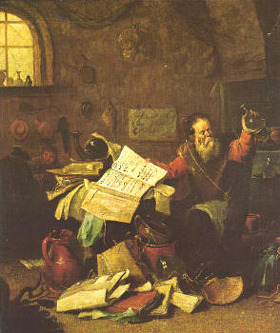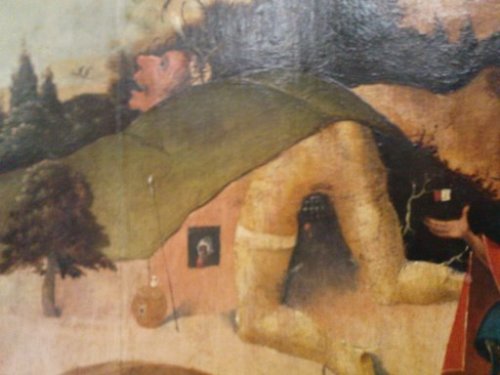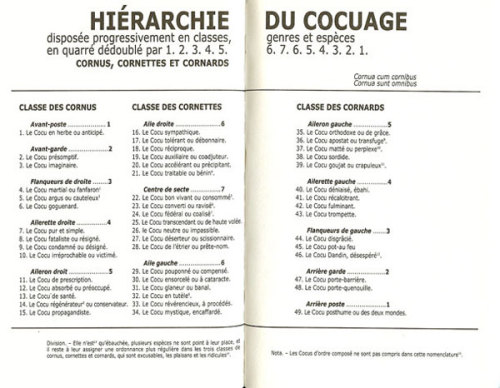The Temptation of Saint Anthony (1878) is a watercolor painting by Belgian artist Félicien Rops. Freud commented on this work in his essay “Delusion and Dream in Jensen’s Gradiva”:
“The engraver has chosen the model case of withdrawal into the life of saints and penitents. An ascetic monk takes refuge – probably to escape worldly temptations – near the image of the crucified Saviour. This cross fades like a shadow and in its place the radiant image of a naked woman in full bloom, takes its place, also in the shape of a crucifixion. Other painters, whose psychological insight was not as penetrating, positioned their analogous representations of temptation, with sin insolent and triumphant, somewhere alongside the Saviour on the Cross. Only Rops made it take the place of Our Lord Himself on the Cross; he seemed to know that the repressed thought returns at the very moment of its repression…” —Translation James Strachey
Some snippets in original German:
“Eine bekannte Radierung von Felicien Rops illustriert diese wenig beachtete und der Würdigung so sehr bedürftige Tatsache eindrucksvoller”
“Ein asketischer Mönch hat sich – gewiss vor den Versuchungen der Welt – zum Bild des gekreuzigten Erlösers geflüchtet. Da sinkt dieses Kreuz schattenhaft nieder und strahlend erhebt sich an seiner Stelle, zu seinem Ersatze, das Bild eines üppigen nackten Weibes in der gleichen Situation der Kreuzigung.”
Some of the stories of the demons and temptations that Anthony is reported to have faced are perpetuated now mostly in paintings, where they give an opportunity and pretext for artists to depict their more lurid or bizarre fantasies. Emphasis on these stories, however, did not really begin until the Middle Ages, when the psychology of the individual became a greater interest.
Many visual artists have depicted these incidents from the life of Saint Anthony; in prose, the tale was retold and embellished by Gustave Flaubert.
The subject of Saint Anthony was first presented in the 10th century at Italian fresco paintings. In the European Middle Ages one can watch an accumulation of the theme in book illumination and later in German woodcuts.
About 1500 originated the famous paintings of Martin Schöngauer (ca. 1490), Hieronymus Bosch (ca. 1505) and Matthias Grünewald (ca. 1510).
In modern and contemporary art (Félicien Rops and Salvador Dalí) the Temptations of Saint Anthony are stable elements in European art.


